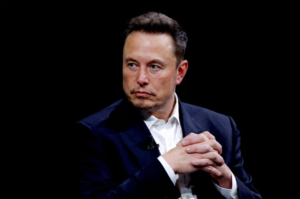Brexit: How Did We Get Here?


By Anna Harvey
On January 31, Union Jacks lined the streets of London in a solemn celebration of Brexit Day, when the United Kingdom formally left the European Union. Since the referendum of 2016, Brexit has been a slow-boiling process, tossed from prime minister to prime minister and fiercely argued within Parliament, but how did the UK reach this historic moment, and what are the consequences for the UK in the long run?
Brexit’s Roots: The United Kingdom and the European Union
When the UK initially joined the European Union (EU), in 1973, it was one of the final countries to do so. Even from the start the UK hesitated to join primarily due to internal political disputes between the Labour and Conservative parties. Originally, the EU devoted itself to rebuilding European economic stability after the second World War by uniting countries through politics and economics, and by the time the UK applied to the EU, the EU began to focus its initiatives primarily upon political and trade agreements. This shift led to the UK distancing itself from the rest of the EU and political differences between EU leaders and British prime ministers resulted in the UK refusing to accept certain EU measures, such as adopting the currency of the euro.
During the 1990s under Conservative Prime Minister Tony Blair, Britain became considerably more pro-EU, and with the Good Friday Agreement in 1998, domestic violence between the Republic of Ireland and Northern Ireland began to fade. This increased political stability within the UK, and under Tony Blair, the nation began to seek more political ties with the EU. During the 2000s however, as tensions between British political parties increased over the state of EU affairs, talk once more emerged of a departure from the EU.
Brexit Becomes a Reality
This talk of leaving the European Union culminated in the historic referendum of 2016 under Prime Minister David Cameron, where, according to BBC, 51.9% of the public voted for a Brexit, whereas 48.1% voted to remain in the EU. In the days following the referendum however, the public made it apparent that many did not completely understand what they voted on. In order to carry out this duty on behalf of the referendum, Parliament needed to approve a withdrawal agreement, which would state the terms and conditions of Brexit.
A major concern of the withdrawal agreement included the economic consequences of the United Kingdom’s departure. After Brexit, the UK would no longer profit from the EU’s trading benefits, and industries based within the UK would suffer as the number of exports would decrease. Additionally, after Brexit the UK would remain outside the EU’s border policy, which allows for free-flow trade and travel between countries. Not only would this involve new checkpoints for British ports, but an immense backup would result that could lead to a lack of fresh produce and the timely arrival of medications. The elimination of the border policy would also firmly establish a border between Northern Ireland and the Republic of Ireland. Many politicians worried that this border could reignite tensions once more between the two entities.
From 2016 – 2019, Parliament tussled on how to address each of these concerns within a Brexit deal. By the original Brexit deadline on March 29, 2019, Parliament still did not have a cohesive plan in place. They then met with the European Council and extended the deadline until October 31, 2019. During this time, Prime Minister Theresa May proposed her own Brexit deal, which was reviewed and rejected by Parliament for a third time. Several days before the October deadline, the European Council once more granted the UK an extension to January 31, 2020. Shortly after the October deadline, Mrs. May stepped down from the prime minister position and Boris Johnson of the Conservative party won in the December General Election by a majority.
Moving on Post-Brexit
While prime ministers before Boris Johnson tried to renegotiate the terms of Brexit in order to prevent a harsh split with the European Union, Johnson’s campaign focused on carrying out Brexit, as indicated in his slogan: “Get Brexit Done.” Additionally, while Prime Minister Johnson’s Brexit plan did not dramatically differ from Theresa May’s plan, he removed the backstop between Northern Ireland and the Republic of Ireland. His plan placed a customs border between Britain and Northern Ireland, where goods are checked, then circulated through Northern Ireland and the Republic of Ireland.
Currently, the United Kingdom’s withdrawal agreement with the EU consists of a transition period, starting from January 31, 2020 to December 31, 2020, during which the UK will adhere to the EU’s trading regulations and rules while the UK and the EU negotiate a new free-trade agreement. According to BBC, “A free trade agreement allow goods to move around the EU without checks or extra charges,” which would help the UK to avoid both backups in the ports and allow them to partake in some privileges that other members of the EU share. If, however, by December 31 the UK has not negotiated a trade deal with the EU, then they will exit the transition period with no trade deal.







